Summer’s end does not mean the flower blooms have to end! Here are some of our favorite fall-blooming flowers that brighten up our autumn landscape—including annuals, perennials, and shrubs. Why not enjoy colorful blooms and foliage for even longer!
ANNUAL FLOWERS
Lots of annuals that can take some cold temps are still pumping out the blossoms at this time of year. These include nasturtiums, zinnias, calendula, marigolds, and rudbeckias. See our flower growing guides for planting and growing tips.
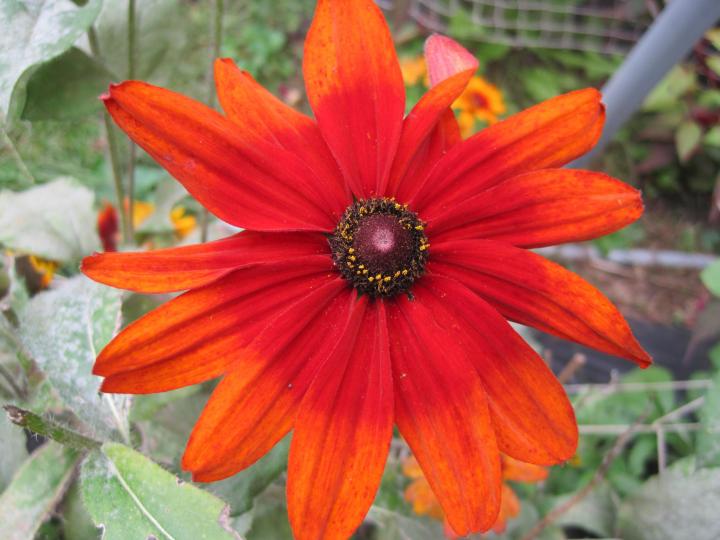
This rudbeckia ‘Cherokee Sunset’ is not reliably hardy in my zone (5) so we grow it as an annual. It will blossom until killing frost.
PERENNIAL FLOWERS
- Joe-Pye weed is a reliable native perennial that blooms from late summer through the first few frosts. The large, purple, clustered flowers grow on plants that can be over 6 feet tall in the right place. Where is that place? Since this plant likes moist soil, many wild ones grow along stream beds and riverbanks in full sun. Pollinators love Joe-Pye weed, so add a couple to the back of your sunny border. It has undergone a name change recently, so if you are going to buy one, look for the Latin name Eutrochium instead of Eupatorium.
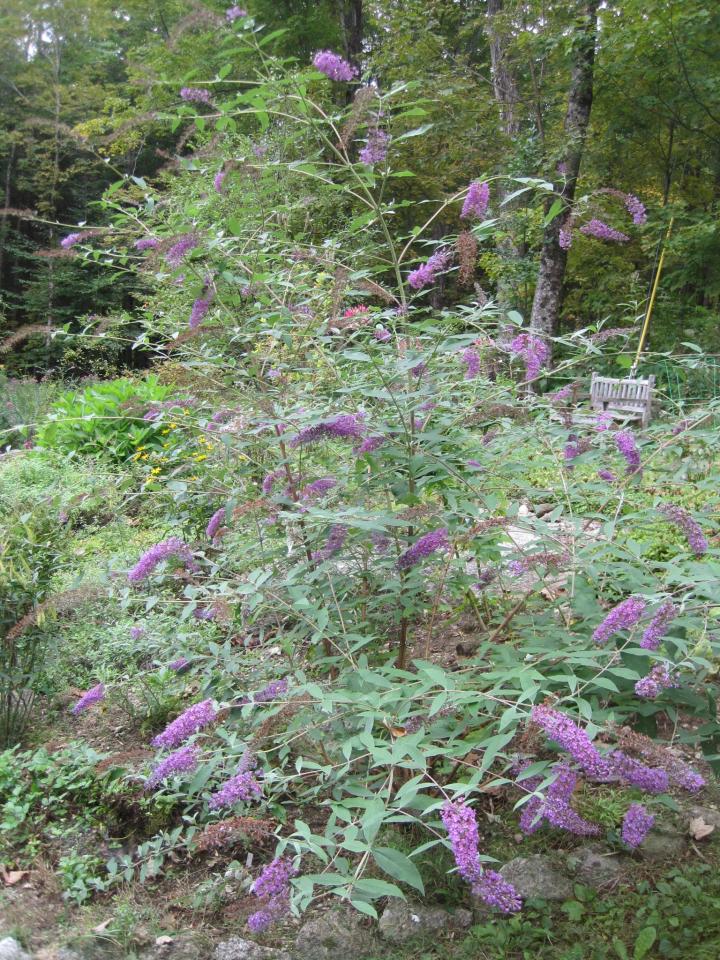
Butterfly Bush (Buddleia)
- Buddleia—commonly known as butterfly bush—is still blossoming, giving the last of the monarchs and other butterflies and bees a source of late nectar. See our Butterfly Bush Growing Guide.
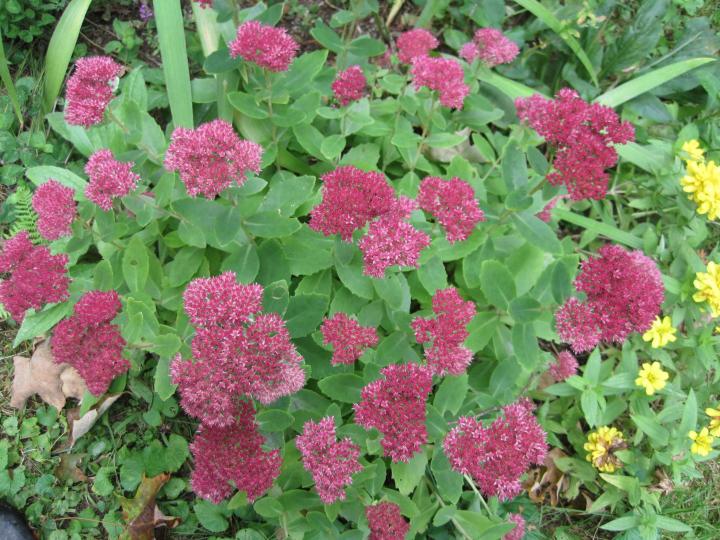
Sedum ‘Autumn Joy’
- Sedum ‘Autumn Joy’ is truly a joy this time of year, when deep-pink blooms emerge from its fleshy foliage.
- Japanese anemone are still blooming at this time of year.
- Foxglove that were cut back after flowering this summer are putting out second spikes of bloom.
- The rugosa rose is still producing blossoms as well.
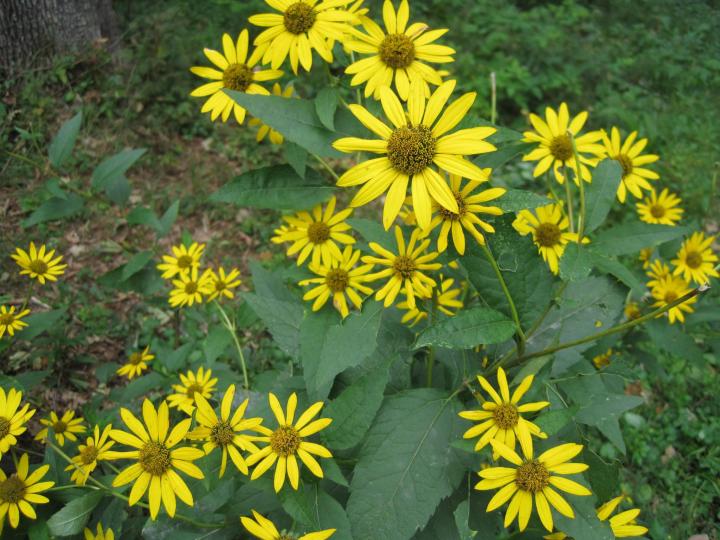
Heliopsis
- Yellow heliopsis are in full flower.
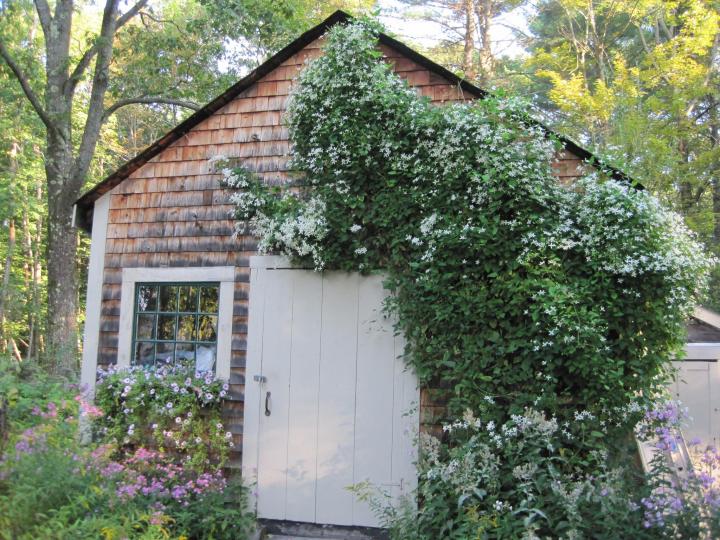
Sweet Autumn Clematis
- Don’t overlook vines: Sweet autumn clematis is blooming its heart out right now!
- ‘Ville de Lyon’ clematis: This climber brings forth spectacular, long-lasting, carmine-red flowers, 4 to 5 inches (or more) across, with yellow stamens for contrast, when maintained in moist but well-draining soils in full sun or partial shade (clematises like to have their heads in the sun and their feet in the shade). It thrives in Zones 4 to 9. Prune to about a foot in height after the final blooms or wait until spring.
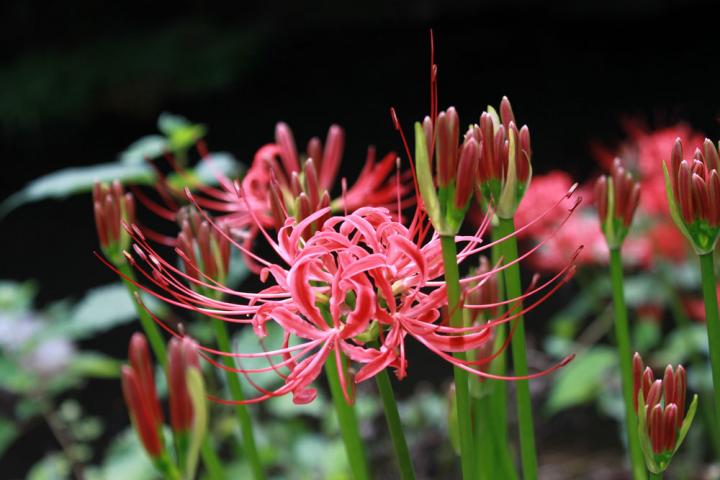
Surprise Lily
- Surprise lily, Lycoris squamigera, is known by several names, each more revealing than the next. Its genus honors the mistress of the ancient Roman Mark Antony, while it is more commonly called resurrection, surprise, and magic lily because its straplike foliage appears in spring and dies back in late summer. And just when you think that it has failed you, its flower stem rises between 18 and 24 inches to burst forth with 4 to 7 trumpetlike, rose-pink blooms that have exceptional fragrance. (Except for the perfume, the flower brings to mind its cousin, amaryllis.) All of this, and Lycoris asks for little in return—only well-drained soil, full to partial sun, and the climate conditions of Zones 5 to 9.
ASTERS
Asters are the queen and king of the fall garden, deserving of their own category! They are easily grown from seed, but this time of year, the garden centers offer a wide range of colors and heights to choose from.
We are partial to the New England asters; despite their name, they grow throughout the US and Canada. They can get quite tall if not chopped back by half in early summer. That quick pruning encourages them to branch, giving us even more flowers on more manageable-sized plants. They have also had a name change, being moved from the crowded aster family to their own separate genus Symphyotrichum. See the Almanac’s Growing Guide for Asters for growing tips.
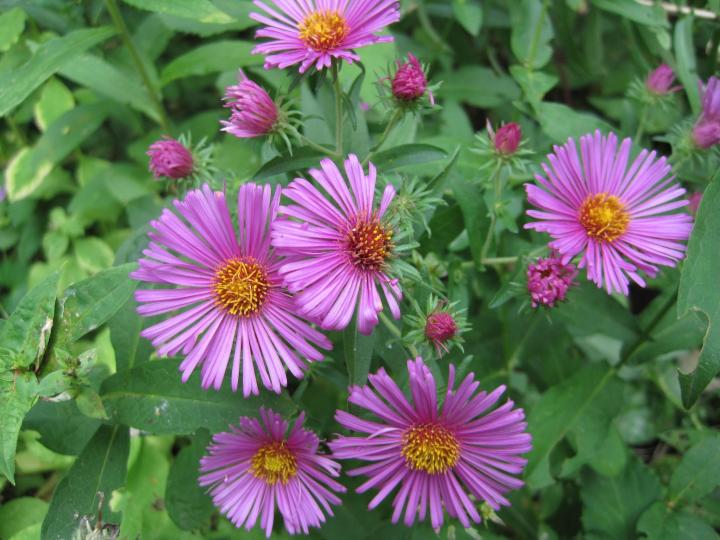
Most of the flowers on this native are in the purple range, but there are other colors that mix nicely with them.
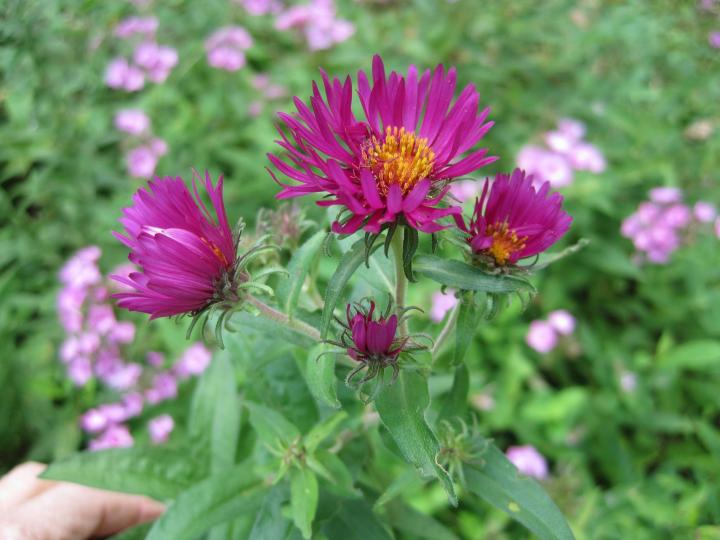
‘September Ruby’ asters (above) are deep magenta.
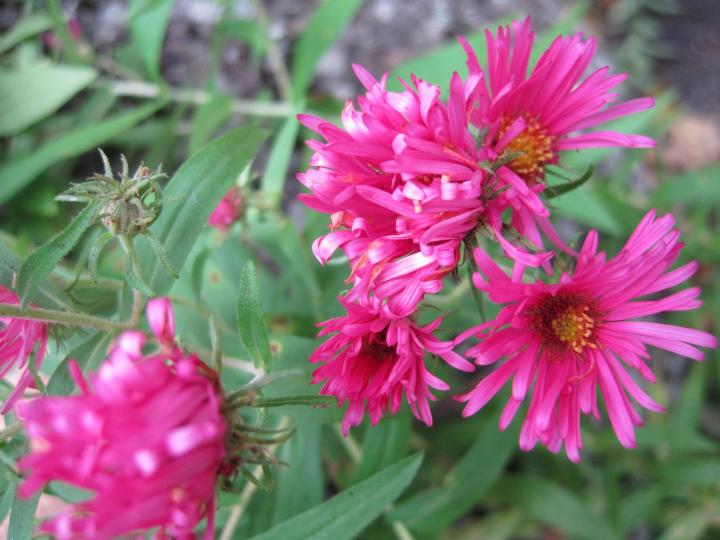
‘Alma Potschke’ asters (above) are hot pink.
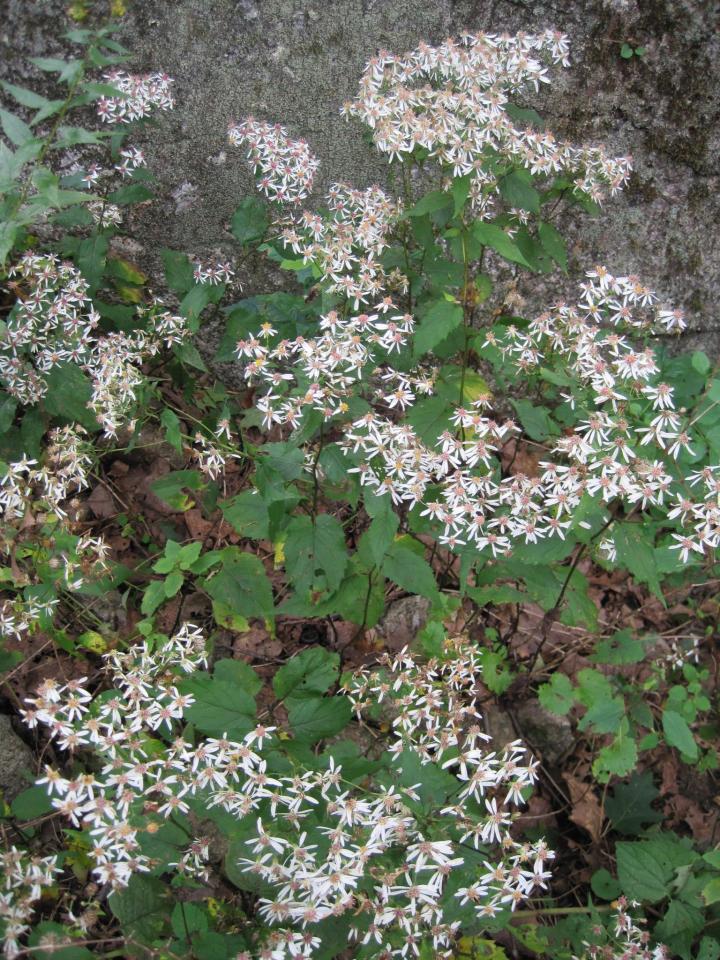
The white wood aster (above) blooms in the dry shade under my maple trees, but is so invasive that even though I spend most of the spring and summer trying to rip it out there are still plenty left to blossom in the fall. It also has a new Latin name: Eurybia divaricata. Divaricata means spreading and straggly. I can attest to those qualities!
‘Snowbank’ false aster, Boltonia asteroides, only sounds chilling; in fact, its billowing profusion of daisylike flowers with their gold centers spreads sunshine. Evocative of aster (hence its nickname: false aster), coreopsis, and cornflower, this North American native begins to flower in August and continues well into September (the first frost will bring its show to an end). A compact plant, it grows just 3 to 4 feet tall and needs no staking. (Maybe that’s why another name for it is white doll’s daisy.) It’s not fussy about soil conditions (in fact, rich soil can cause it to flop) and will bring years of pleasure in Zones 3 to 10.
FALL SHRUBS AND TREES
Flowerbeds aren’t the only ones producing blooms this time of year. Trees and shrubs can add splashes of color at eye level and above.
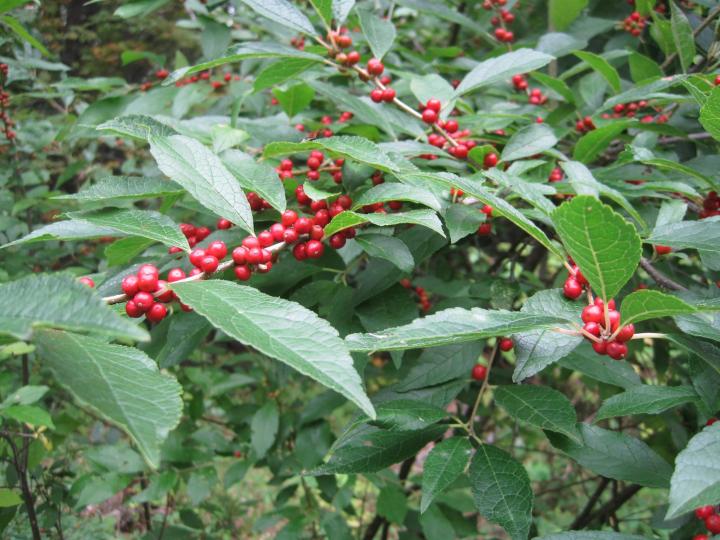
Winterberries
- Bright red winterberries (Ilex verticillata), a type of holly, last until a flock of hungry birds wipes them out. Be aware that the winterberry needs male and female plants that bloom at the same time to produce any berries. I saw a new one at the garden center called ‘Sweetheart’ that has both sexes in one pot. How handy is that!
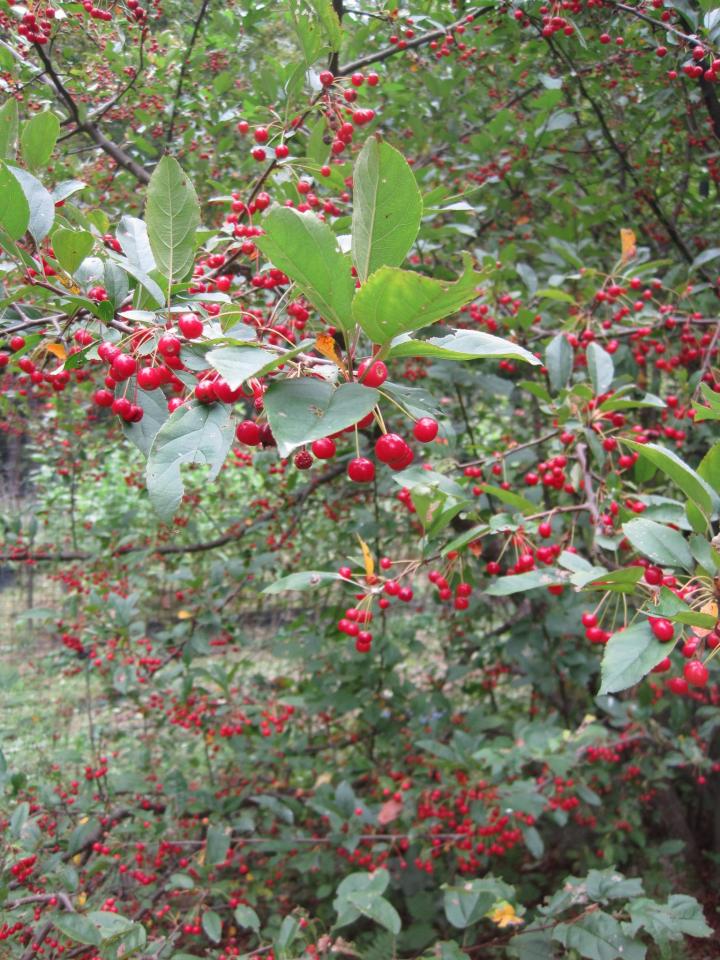
Sargent Crabapple
- The dark red fruit of the Sargent crabapple (Malus sargentii) will eventually contrast nicely with its yellow fall foliage and will persist into late winter. Rather than a traditionally shaped apple tree, it is a multi-stemmed shrub that grows to be about 10 feet tall and 15 feet wide. Mine has gotten huge and will get some of its many trunks removed when we are in pruning mode this winter.
Plants not only bring color through their blooms and berries, but also through their foliage. Look for shrubs and trees with leaves that turn red.
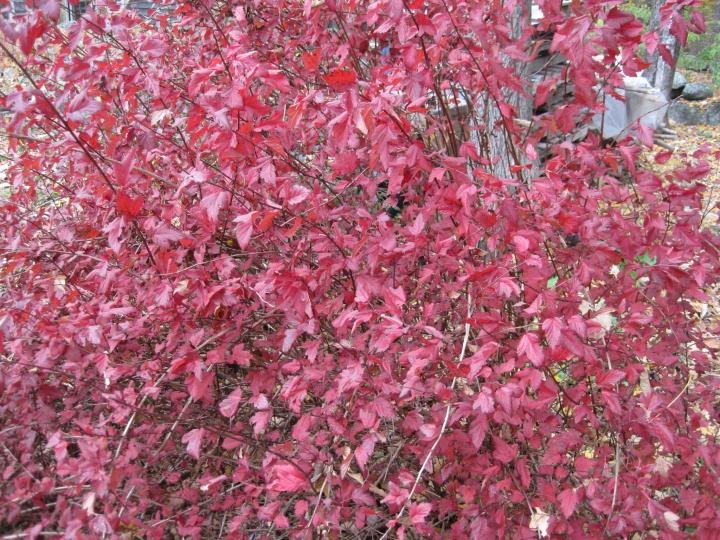
Nine-bark ‘Summer Wine’
- Nine-bark (Physocarpus opulifolius) is great for fall color. I have one called ‘Summer Wine’ that has attractive burgundy leaves all season long but they turn a brighter red in the fall. There are many other cultivars that have foliage in other colors ranging from lime green through coppery orange to deep purple.
- Smokebush (Cotinus coggygria) ‘Royal Purple’ has dark maroon foliage that turns even deeper purple in the fall. I always envied the one I drove past daily and finally bought a young “stick” a few years ago. It is slow getting going but eventually it will start to produce its hairy flowers which look like smoke from afar.
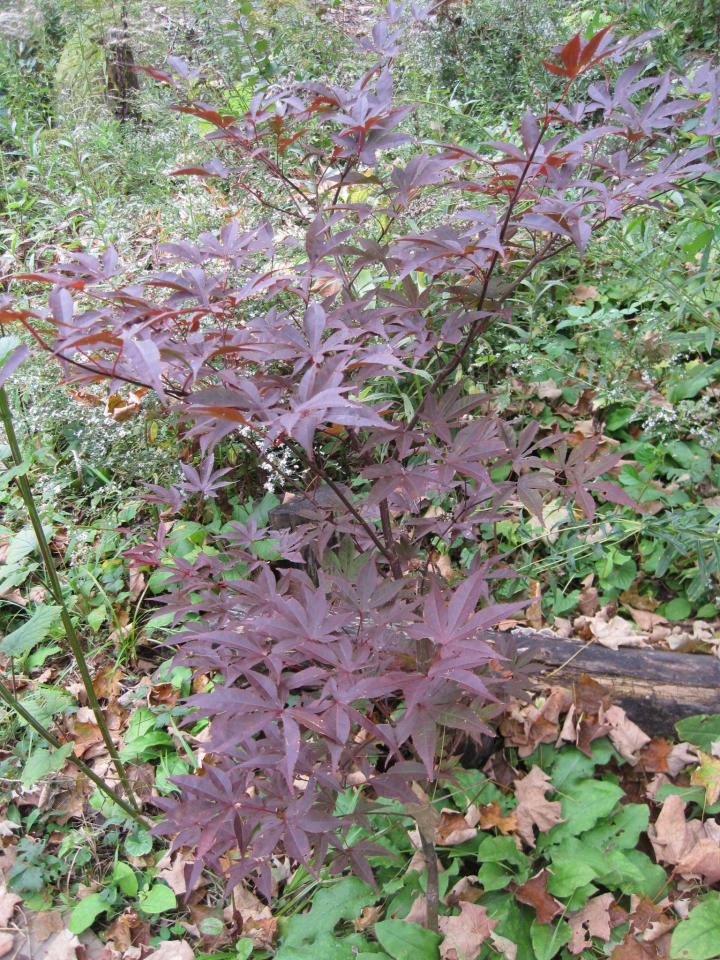
Japanese Maple ‘Bloodgood’
- Japanese maple (Acer palmatum) ‘Bloodgood’ is a standout in any season but especially so in fall. There are plenty of others to choose from if you are thinking of adding one to your landscape. Just pay attention to their hardiness zone. Many won’t survive winters that regularly go below minus 20 degrees. I love the ones with finely cut leaves (Acer palmatum dissectum) and just planted one outside that I had been growing in a pot for several years, called ‘Inaba Shidare’. Hopefully it will make the transition successfully!
Add these beautiful fall flowers, trees, and shrubs to your garden to enjoy colorful blooms and foliage for even longer!
Fall is a good time for planting, as the soil is still warm and moist and many garden centers offer deep discounts on perennials, trees and shrubs.
Source / The Old Farmer’s Almanac

